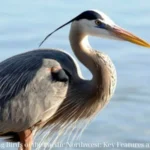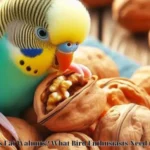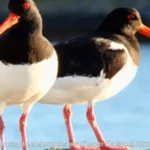Bird feeding is a delightful hobby that brings nature right to your backyard. Watching colorful birds flit around feeders, hearing their melodious songs, and observing their behaviors can provide endless joy and relaxation. However, selecting the right type of birdseed is crucial for attracting the desired bird species while deterring less desirable ones. One seed that often comes up in bird feeding discussions is safflower seed. This article Bird Care Guide will explore what birds will not eat safflower seeds, helping you make informed decisions for your bird feeding strategy.
Understanding Safflower Seeds
Safflower seeds come from the safflower plant, which is a thistle-like annual with bright yellow, orange, or red flowers. The seeds are small, white, and have a slightly bitter taste. Safflower seeds are rich in protein, fat, and fiber, making them a nutritious option for many birds. They are also known for being less appealing to certain less-desirable bird species and other wildlife, which can help you maintain a more targeted and efficient feeding station.
Benefits of Using Safflower Seeds
- Selective Feeding: Safflower seeds are not universally attractive to all bird species, which can help in deterring unwanted birds and pests.
- Nutritional Value: These seeds are rich in nutrients, providing essential proteins and fats for birds, which are especially beneficial during breeding seasons and harsh weather conditions.
- Pest Deterrence: Safflower seeds are typically not favored by squirrels, which can be a common problem at bird feeders.
What Birds Will Not Eat Safflower Seeds?

While safflower seeds are favored by many birds, some species do not like them. Here are the primary birds that will not eat safflower seeds:
1. Blackbirds
Blackbirds, including grackles and cowbirds, are notorious for their voracious appetites and can quickly empty a feeder. Fortunately, these birds typically avoid safflower seeds. The hard shell and slightly bitter taste do not appeal to them, making safflower seeds an excellent choice if you want to reduce their presence at your feeders.
2. European Starlings
European Starlings are another species that can dominate feeders, often pushing away smaller, more desirable birds. Like blackbirds, starlings are not fond of safflower seeds. Their preference for softer seeds and insects means they will often ignore feeders stocked with safflower seeds.
3. House Sparrows
House Sparrows are widespread and can be a nuisance at bird feeders, as they often feed in large flocks and displace other birds. Safflower seeds are not their preferred food, so using these seeds can help minimize their visits to your feeders.
4. Doves and Pigeons
While some dove species, such as mourning doves, might occasionally eat safflower seeds, many larger dove and pigeon species generally avoid them. These birds prefer larger, softer seeds like cracked corn and sunflower seeds.
Birds That Prefer Safflower Seeds
Now that we’ve covered the birds that avoid safflower seeds, let’s take a look at some of the bird species that enjoy these seeds and will frequently visit feeders stocked with them:
1. Northern Cardinals
Northern Cardinals are one of the most popular backyard birds, known for their vibrant red plumage and beautiful songs. They have strong beaks that easily crack open safflower seeds, making them a primary consumer of this seed type.
2. Chickadees
Chickadees, including Black-capped Chickadees and Carolina Chickadees, are small but hardy birds that enjoy safflower seeds. Their agile feeding behavior and ability to cling to feeders make them frequent visitors.
3. Tufted Titmice
Tufted Titmice are closely related to chickadees and share similar feeding habits. They are often seen at feeders with safflower seeds, using their sharp beaks to crack open the shells.
4. House Finches
House Finches, with their cheerful songs and colorful plumage, are common visitors to safflower seed feeders. They have no trouble eating safflower seeds and are attracted to feeders that offer them.
5. Nuthatches
Nuthatches, such as the White-breasted Nuthatch and Red-breasted Nuthatch, are adept at accessing safflower seeds. They are often seen moving up and down tree trunks and visiting feeders.
Tips for Feeding Birds with Safflower Seeds
To make the most of using safflower seeds in your bird feeding strategy, consider the following tips:
1. Use Safflower Seeds Exclusively
If your goal is to deter specific birds like blackbirds and starlings, try filling one or more of your feeders exclusively with safflower seeds. This selective feeding can help you attract the birds you want while minimizing the presence of less desirable species.
2. Choose the Right Feeder
Opt for feeders designed for smaller birds. Tube feeders with small perches are ideal, as they allow birds like chickadees, titmice, and finches to feed comfortably while deterring larger birds that avoid safflower seeds.
3. Combine with Other Seeds
If you enjoy attracting a variety of birds to your backyard, consider offering a mix of seeds in different feeders. Combine safflower seeds with other types of birdseed, such as sunflower seeds or nyjer seeds, in separate feeders to cater to a broader range of bird species.
4. Monitor Feeder Activity
Pay attention to which birds visit your feeders and how they respond to the safflower seeds. If you notice a significant decrease in unwanted bird species, you can adjust your feeding strategy accordingly.
5. Clean Feeders Regularly
Maintaining clean feeders is crucial for bird health and attracting birds to your feeders. Regularly clean and refill your feeders with fresh safflower seeds to keep your avian visitors happy and healthy.
The Role of Safflower Seeds in Bird Conservation
Beyond their practical use in backyard bird feeding, safflower seeds can also play a role in bird conservation efforts. By selectively feeding birds with safflower seeds, you can help create a more balanced ecosystem in your backyard, supporting bird species that may face competition from more aggressive feeders.
Supporting Native Species
Many of the birds that prefer safflower seeds, such as Northern Cardinals and chickadees, are native species. By providing a reliable food source that deters invasive species like European Starlings and House Sparrows, you contribute to the well-being of native bird populations.
Reducing Feeder Competition
Safflower seeds can help reduce competition at feeders, allowing smaller, less aggressive birds to feed without being displaced by larger, more dominant species. This balance can lead to a more diverse and harmonious bird community in your backyard.
Promoting Bird Health
Safflower seeds’ high nutritional content supports the health and vitality of the birds that consume them. Providing a steady supply of nutritious food helps birds maintain their energy levels, especially during the breeding season and harsh winter months.
Conclusion
Understanding what birds will not eat safflower seeds is essential for any bird enthusiast looking to create a harmonious and enjoyable bird feeding environment. By incorporating safflower seeds into your bird feeding strategy, you can attract a variety of desirable bird species while deterring those that might disrupt the balance of your backyard ecosystem. Remember to use safflower seeds exclusively or in combination with other seeds, choose the right feeders, and maintain clean feeding stations to ensure the health and happiness of your avian visitors. Happy bird watching!





